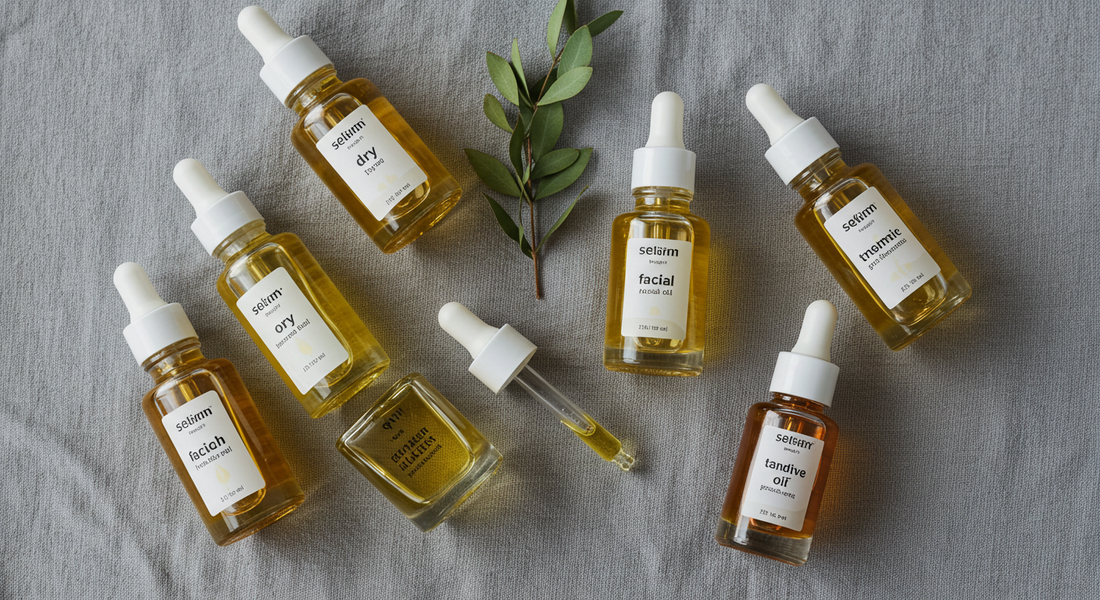
Facial Oils: The Skincare Secret You Might Be Overlooking
Share
Facial oils have long been misunderstood in the skincare world. Often feared for being too greasy, too heavy, or pore-clogging, these powerful elixirs are finally getting the attention they deserve. When used correctly, facial oils can transform your routine—adding nourishment, sealing in hydration, and promoting a natural glow. Whether you’re a skincare beginner or someone looking to refine your routine, understanding the myths, uses, and benefits of facial oils is the first step toward healthier, more radiant skin.
What Are Facial Oils?
Facial oils are lipid-based products typically derived from plants, seeds, or nuts. Rich in fatty acids, antioxidants, and vitamins, they are designed to complement your skin’s natural barrier. Unlike moisturizers, which often contain water and emulsifiers, facial oils are anhydrous, meaning they don’t contain water. They work by locking in moisture and reinforcing the skin’s lipid layer to prevent transepidermal water loss.
Facial oils come in a variety of textures and absorption rates. Some are lightweight and fast-absorbing, ideal for oily or acne-prone skin. Others are richer and more emollient, perfect for dry or mature skin. The key is to choose an oil suited to your skin type and concerns.
Debunking Common Myths
Myth 1: Facial oils clog pores.
Truth: Not all oils are comedogenic. In fact, oils like jojoba, rosehip, and grapeseed are known for their non-comedogenic properties. Choosing the right oil is crucial, especially for acne-prone skin.
Myth 2: Oily skin doesn't need facial oils.
Truth: Oily skin can actually benefit from facial oils that help regulate sebum production. Lightweight oils high in linoleic acid can help balance and calm overactive oil glands.
Myth 3: Oils replace moisturizers.
Truth: Facial oils are best used as a supplement to moisturizers, not a replacement. While oils lock in hydration, they don’t provide water-based moisture. Layering oil over a hydrating serum or cream ensures balanced skin.
How to Use Facial Oils Effectively
Integrating facial oils into your routine is simpler than it seems. Apply them as the final step in your skincare regimen, after water-based products like serums and moisturizers. This allows the oil to seal in moisture and create a protective barrier.
Start with 2–3 drops, warming the oil between your palms and pressing it gently into the skin. For daytime, use lightweight oils that won’t interfere with makeup or SPF. At night, richer oils can be used to deeply nourish and restore the skin while you sleep.
How to Choose the Right Oil for Your Skin Type
Oily or Acne-Prone Skin
Look for lightweight, non-comedogenic oils such as jojoba, squalane, or hemp seed oil.
Dry or Dehydrated Skin
Heavier oils like avocado, marula, or camellia oil can provide deep nourishment.
Sensitive Skin
Opt for calming oils like calendula, rosehip, or chamomile.
Combination Skin
Argan or sweet almond oil offers balance without overwhelming oily zones.
Key Benefits of Facial Oils
- Seal in hydration and prevent moisture loss
- Deliver essential nutrients and antioxidants
- Strengthen the skin barrier
- Reduce inflammation and redness
- Improve skin texture and elasticity
Mistakes to Avoid When Using Facial Oils
- Overuse: A few drops go a long way. Using too much can lead to buildup and clogged pores.
- Wrong Order: Always apply facial oil after water-based products.
- Ignoring Skin Type: Choose oils based on your skin’s needs. Using a rich oil on oily skin can cause breakouts.
- Skipping Patch Tests: Always test new oils on a small area before full application.
Final Thoughts
Facial oils can be a powerful ally in your skincare journey when used mindfully and with the right knowledge. By selecting an oil that suits your skin type and integrating it properly into your routine, you can experience softer, smoother, and more resilient skin. Embrace facial oils not with fear, but with curiosity—and let your skin reveal its natural glow.
